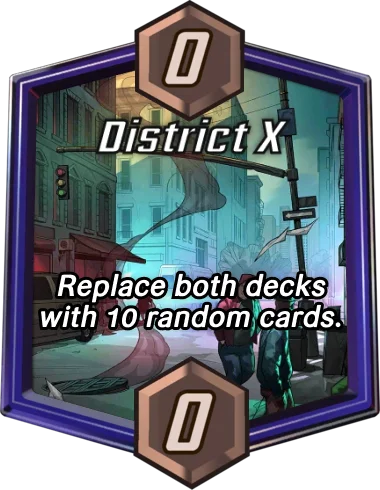Deckbuilding, Pt. 1 - Choosing Cards
Figure out why you’re playing this game.
Use Whatever, Don’t Apologize
Coined on the podcast Crucible Radio, this phrase states a simple fact.
There are no rules except for the ones you make for yourself.
Think about your goals in Snap. Are you playing to have fun, build new decks, and collect shiny cards? If so, that’s great! This game offers a vast array of playstyles to experience and collectibles to explore.
But if you’re reading this, you probably want to win.
Play To Win
If you’re playing to win, then it’s your responsibility to use every tool at your disposal, even if that includes cards or strategies that some players might consider “unfair” or “cheap”. Marvel Snap is a game that’s won by maximizing every possible advantage.
Never apologize for playing to win - embrace it, and strive to constantly improve your skills and strategies. Don’t let your opponents dictate how you play the game - take control, and make the most of every opportunity to come out on top.
Archetypes and Shells
 Cards that synergize well together perform better than random cards, as District X routinely demonstrates.
Cards that synergize well together perform better than random cards, as District X routinely demonstrates.
- An archetype is a particular strategy that defines a deck.
- A shell is a core framework of cards that implement that archetype.
Most decks are built around a shell of 5-10 core cards, alongside an assortment of support and tech cards.
Often this shell is oriented around a single card, like Patriot, Galactus, or Mr. Negative. The exact combination of cards in these decks continually evolves with the meta.
Good players have first-hand experience with all of these archteypes - there’s no better way to understand the strengths and weaknesses of a playstyle than to play it yourself. If you have the cards, try it! This helps you learn a few things that are particularly helpful when playing against this deck in the future:
- Which cards are played each turn to achieve the win condition
- Which locations best support or hinder this deck
- Which tech cards perform best against this deck
- Which cards are optional and can be switched out
There are dozens of archetypes in Marvel Snap, but we’ll review some of the common setups. Learn to recognize these decks on sight to better predict your opponent.
Zoo
“Zoo” decks - named for their large number of 1-cost cards - are dominant in the early Snap progression. These decks include large numbers of cheap cards, with a shell designed to protect and buff them:

Destroy
The core of the Destroy archetype are a number of inexpensive cards that generate power through destruction. This shell can be slotted into a variety of decks for an early game push.

However, this archetype commonly appears in one of a few configurations. The first of these is the Deathwave shell, which uses Wave on turn 5 to play Death and another 6-cost card on turn 6:

Another common destroy deck is built around repeatedly destroying Deadpool:

Move
Move decks are immediately recognizable. The shell is made up of two halves - the first are cards that benefit from being moved:

Then there are the cards that move your other cards around:

Hand Size
This archetype is centered around generating new cards:

Then playing cards that benefit from creating cards and large handsize:

Discard
Discard decks are similar to move decks, in that they are immediately recognizable and consist of two parts. The first is responsible for discarding cards:

The other part benefits from discards:

